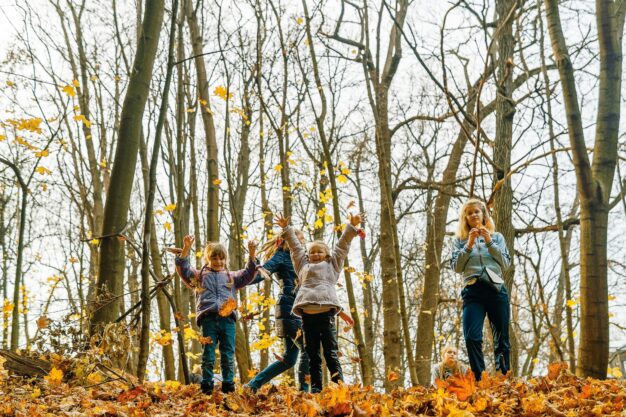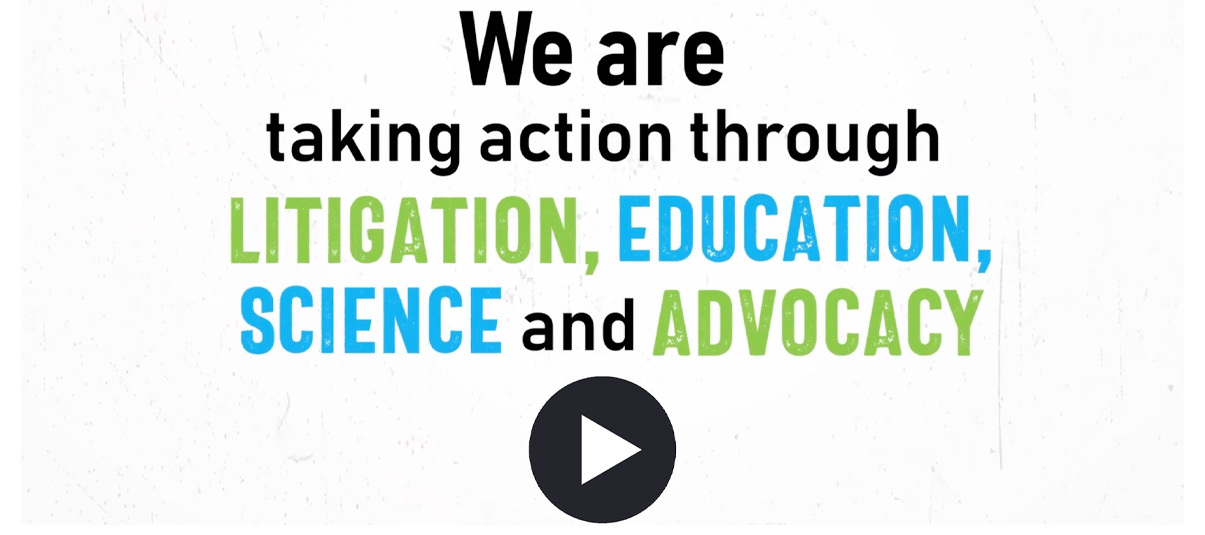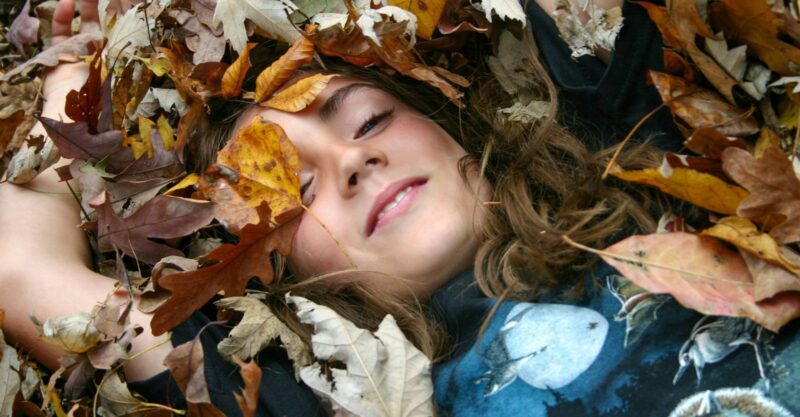Rewild the Children: Healing the Post-Pandemic Generation Through Nature
Why Nature Is the Missing Medicine for Today’s Kids
For decades, health experts warned that children were losing touch with the natural world. Then COVID hit—and made things exponentially worse. Lockdowns, school closures, masking mandates and social isolation upended childhood itself, stripping kids of movement, connection and play. Poor diets, ultra-processed foods, and over-reliance on digital devices compounded the damage, while COVID injections harmed and did not provide immune protection.
Four years later, the toll is undeniable. Across Canada and the world, youth mental health has plummeted. Anxiety, depression, self-harm and hospitalizations have surged. Yet as policymakers double down on screen-based “solutions,” the real medicine—time outdoors in nature—is still being neglected.
It’s time to hold our governments accountable for what they did to our children—and to lead the recovery ourselves by getting kids back where they belong: outside.
The Pandemic Generation: A Crisis of Disconnection
A landmark review in the journal European Child & Adolescent Psychiatry found that during lockdowns, children’s anxiety ranged from 1.8% to nearly 50%, and depression from 2% to 64%. Irritability affected up to 73% of children studied. These weren’t minor disruptions—they were signs of widespread trauma.
The 2025 BBC Future feature “The Pandemic Generation” confirmed that these effects are long-lasting. Children born or raised during lockdowns are now showing measurable developmental delays, emotional dysregulation and social anxiety. Psychologists warn that many will carry this burden into adulthood if society fails to act.
In Canada, the numbers are equally grim. According to Statistics Canada, among youth aged 15–17 who rated their mental health as “good or excellent” in 2019, 23% now say it’s fair or poor. Girls are suffering most: 26% of girls versus 17% of boys reported a decline. Youth mental-health hospitalizations, which initially dropped in 2020 due to fear and service disruptions, have since rebounded—especially for self-harm among teenage girls.
An Alberta study found youth deaths among those seen for mental-health issues more than doubled from 71 per 100,000 youth in 2018/19 to 163 per 100,000 in 2021/22 (Child and Adolescent Psychiatry and Mental Health, 2024).
“Children didn’t just miss school—they lost touch with their peers, their routines and the natural world that nurtures resilience,” notes Dr. Jean Twenge, author of iGen.
These numbers paint a devastating picture of young lives destabilized not by a virus—but by the policies meant to “protect” them.
Policy Failures: What the “Experts” Got Wrong
As Dr. Vinay Prasad wrote in his widely shared essay “The Pandemic Policies That Hurt Children,” the decisions that closed schools and forced masks on toddlers were “massively catastrophic and harmful blunders.”
Primary schools in Europe stayed open—or closed for only a few weeks. In Canada and the U.S., many children lost over a year of normal schooling. Playgrounds were wrapped in caution tape. Outdoor recreation was banned. Families were told to fear proximity, touch and breath itself.
These policies were not guided by science. There was no evidence that outdoor transmission was significant among children. Cloth masks, later proven ineffective even in adults, became mandatory for kids outdoors. Meanwhile, children were often confined to poor diets of ultra-processed foods and sugary snacks, which further compromised immune and metabolic health.
“No organization rose to defend the interests of children. We failed you,” wrote Prasad, emphasizing that policy decisions prioritized politics over the health of young people.
The legacy media cheered these restrictions while silencing dissenting pediatricians, educators and parents. The result: widespread learning loss, loneliness, and a generation of anxious, disconnected kids.
What’s worse–governments have yet to issue apologies—or any comprehensive recovery plan focused on mental health or nature reconnection. Finally in September 2025, the Government of Canada announced an $30 million investment (over four years) for youth mental health research to identify which supports work best for young people. Let’s see what they come up with!

The Science of Healing: Nature as Medicine
If disconnection caused the damage, reconnection must lead the recovery. Decades of research show that contact with the natural world boosts immunity, lowers stress hormones and restores mental balance.
A review of 143 studies found nature exposure improved brain activity, cognitive performance and emotional well-being in children. Another study showed that just six minutes of viewing a woodland scene significantly improved mood and attention in teens.
A meta-analysis in Science Direct concluded that nature contact had “a significant restorative effect” on children’s cognitive and emotional resources. And a BMJ review found over half of studies showed statistically significant mental-health benefits from outdoor exposure.
Canadian data reinforce this. EcoParent magazine reported in 2024 that children who spend at least two hours per week outdoors demonstrate better focus, creativity and resilience—qualities that buffer against anxiety and depression.
“When a child spends time outside, stress hormones fall, curiosity returns and joy reawakens. Nature is not a luxury—it’s a biological necessity,” writes Rick Smith, PhD, EcoParent
Exposure to nature also supports immune function, particularly when combined with healthy nutrition. Hands-on activities like gardening or visiting parks, apple or pumpkin-picking at organic farms connect kids to real food, moving them away from ultra-processed diets and supporting natural defenses. As research confirms, this combination—outdoor activity plus nutrient-rich foods—outperforms pharmaceutical interventions for foundational health.
Why Kids Resist—and Why Parents Must Persist
After years of lockdowns and screen dependence, many parents are finding that their kids simply don’t want to go outside. The website Get the Kids Outside describes it plainly: children have become conditioned to the “dopamine hits” of screens, and real life can feel dull by comparison.
It’s not enough to say “go play outside.” Parents must lead by example—and sometimes, yes, force it for their own good.
Practical strategies include:
-
Set a daily “outside time” rule. No devices until an hour outdoors.
-
Create rituals: morning walks, evening dog runs, weekend hikes.
-
Make it social: invite friends or cousins; shared experiences reduce resistance.
-
Involve nature in chores: garden, shovel, feed birds, plant bulbs.
-
Model joy: show genuine curiosity about what’s growing, moving or changing.
“The antidote to anxiety isn’t another app or pill—it’s sunlight, movement and human connection,” notes Dr. Jean Twenge.
The key is to reconnect children’s senses with reality. The longer they’ve been immersed in screens, the harder the transition—but also the more transformative the outcome.
The Bigger Picture: Rebuilding Connection and Accountability
By every available metric—mental health, physical activity and community engagement—children are struggling more now than before 2020. Yet governments continue to pour funding into pharmaceutical and digital “solutions,” ignoring the simplest, most evidence-based intervention: nature access, exercise and wholesome nutrition. Of course this is in part what HHS Secretary Robert F. Kennedy Jr. and the Make America Healthy Again (MAHA) agenda is addressing.
Nature is not an “alternative therapy.” It’s the original design of human health. Children are supposed to climb, breathe, explore and get dirty. When that natural medicine is replaced with isolation, fear, screens and ultra-processed foods, disease and despair follow.
We must continue to demand that policymakers in Canada acknowledge the harm done by the COVID lockdowns and restrictions—and shift funding accordingly. Contact your representatives here.
Parents, meanwhile, can lead by example. Every hour outside is an act of resistance and restoration.
References:
Panda, P. K. et al. (2021). Psychological and Behavioral Impact of Lockdown and Quarantine Measures on Children During COVID-19 Pandemic: A Systematic Review and Meta-Analysis. European Child & Adolescent Psychiatry. SpringerLink.
BBC Future. (2025, June). The Pandemic Generation: How COVID-19 Has Left a Long-Term Mark on Children.
Statistics Canada. (2024). Canadian Social Survey on Youth Mental Health.
Public Health Agency of Canada. (2024). Assessing the Impact of the COVID-19 Pandemic on Mental-Health-Related Hospitalization in Youth.
Child and Adolescent Psychiatry and Mental Health. (2024). Long-Term Outcomes in Youth Mental-Health Services in Alberta.
Jimenez, M. P. et al. (2021). Nature Exposure and Children’s Health: A Review of 143 Studies. International Journal of Environmental Research and Public Health, 18(8): 4325.
Moll, R. et al. (2022). Nature Exposure in Children and Adolescents: A Systematic Review. Environmental Research. Science Direct.
Nature Scientific Reports. (2023). The effect of brief exposure to virtual nature on mental wellbeing in adolescents.
Tillmann, S. et al. (2018). Mental health benefits of interactions with nature in children and teenagers: A systematic review
Smith, Rick. (2019, Mar 1). Help Your Kids Find Natural Settings, Even in Urban Areas. EcoParent.
Get the Kids Outside. 21 Simple Ways to Help Kids Who Don’t Want to Go Outside
Prasad, Vinay. (2021, Dec 14). The Pandemic Policies That Hurt Children. Substack.
Dr. Jean Twenge, iGen.
Photo by Vitolda Klein on Unsplash
************************************************************************************************************************

